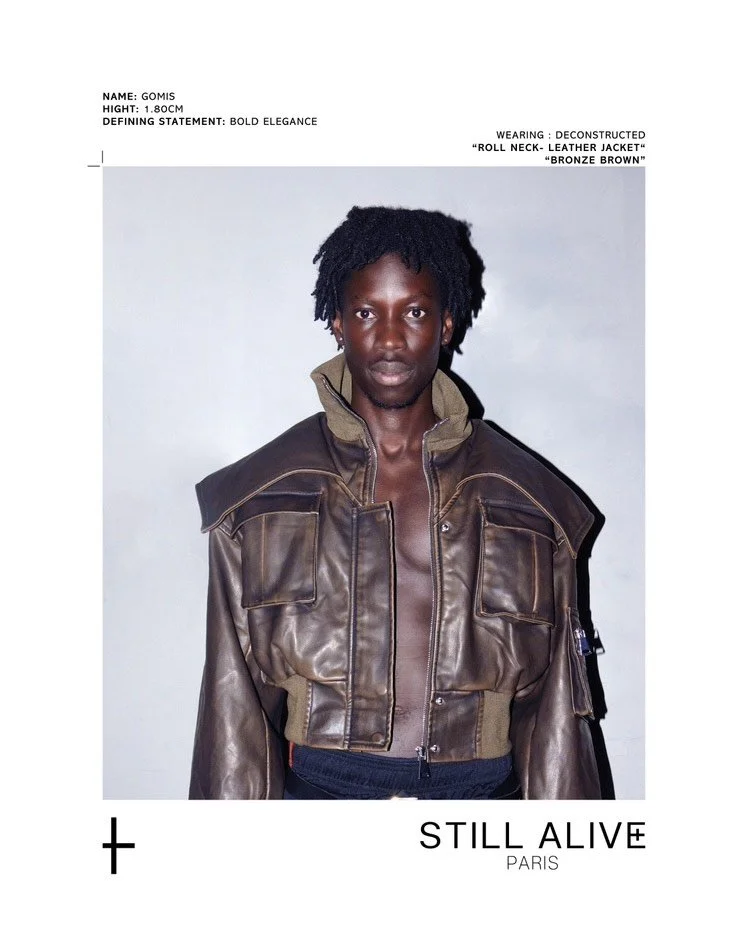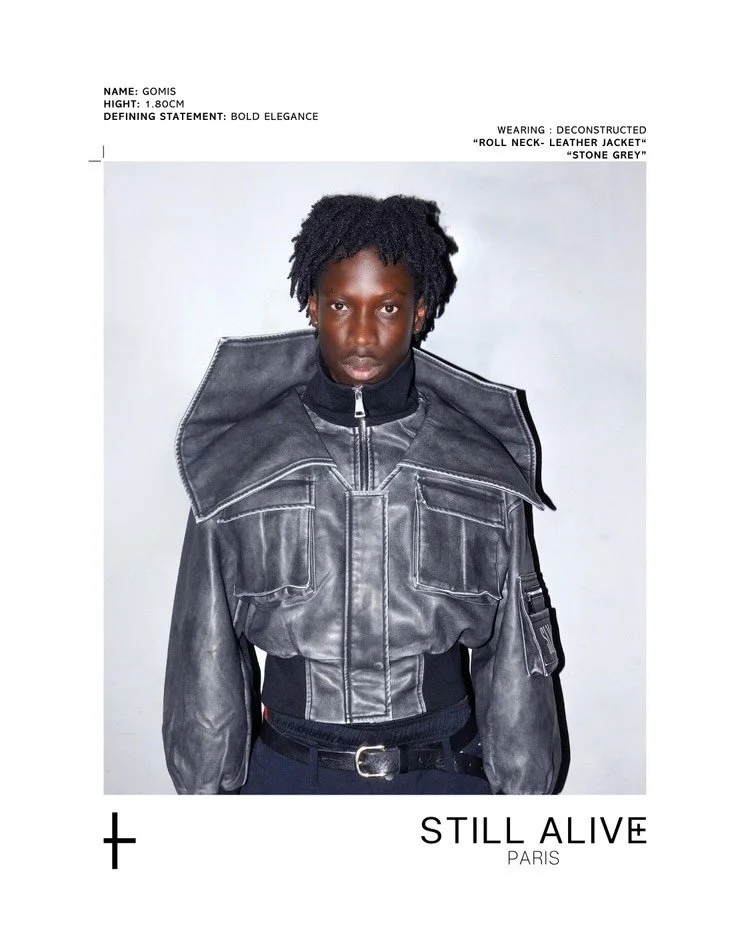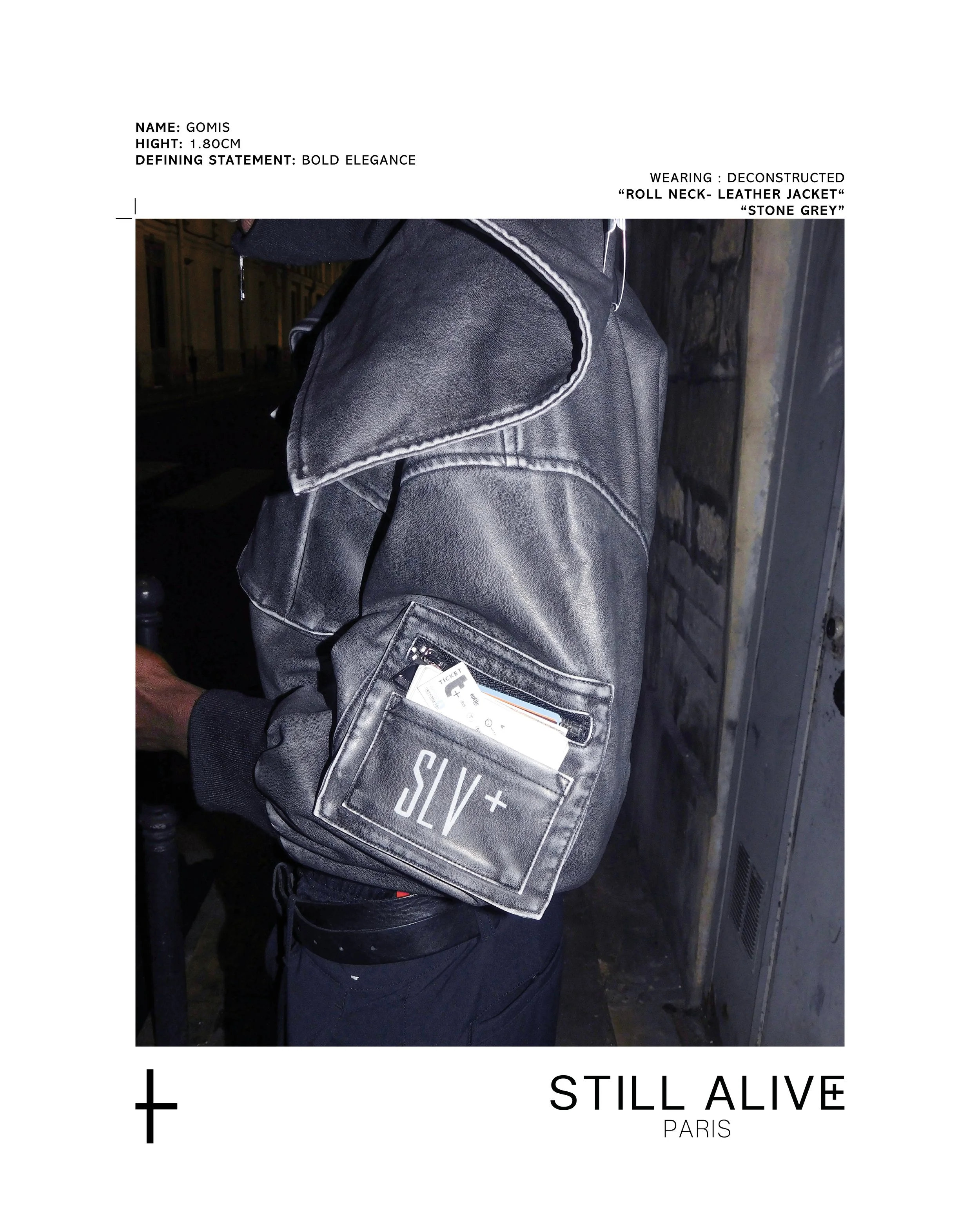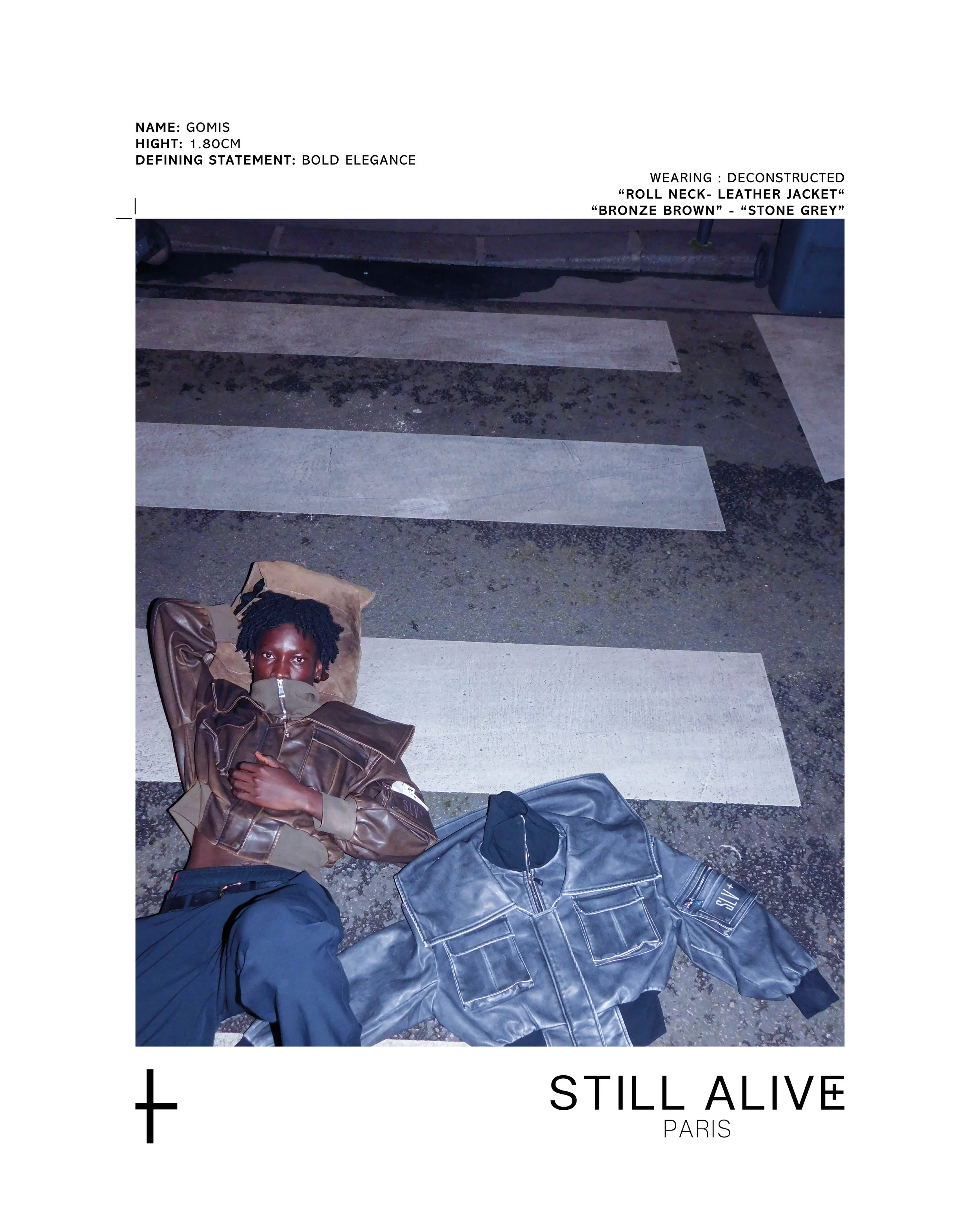Still Alive in Paris
A Portrait of Ghanaian-German designer Elliot De-Graft
Directed by Andrea Nazarian
Still Alive in Paris, a powerful new short documentary by Andrea Nazarian, follows the creative journey of Paris-based designer Elliot De-Graft, the visionary behind the rising ready-to-wear and accessories label Still Alive. Shot between Bremen and Paris, the 7-minute film traces Elliot’s roots, inspirations and tireless pursuit of creativity, as he establishes himself and his label in the heart of the Parisian fashion scene.
To mark the recent release, Andrea and Elliot dive deeper into the making of the film - sharing with us their creative connection and what it means to stay still alive in today’s cultural landscape.
Still Alive in Paris beautifully blends fashion and storytelling. How did you approach portraying Elliot’s roots, inspirations, and tireless pursuit of creativity in a way that is both intimate and visually captivating - while also showcasing the essence of his rising read-to-wear brand, Still Alive?
A: It was important for us to highlight the energetic contrast between where Elliot first discovered his love for fashion and where he chose to seriously pursue it. The small-town-roots-to-big-city journey is a classic tale, but it's not often we witness this rite of passage through the lens of a child of African immigrants living in Europe.
With this in mind, we approached the film through the eyes of an outsider looking in—a young person who knows they belong inside, but must find their own way of entering. That perspective informed both the emotional tone and visual language of the piece.
Andrea, your work often explores identity and movement across different cultures. What drew you specifically to Elliot’s story?
A: I saw a parallel between what I’m doing as a filmmaker and what Elliot is building with his brand. As two non-Parisians driven to work, grow and succeed in the city, we connected over our shared ambition to develop as artists, push boundaries and navigate adversity in pursuit of a higher standard of artistry.
Yes, I wanted to create a layered approach. I love the rough feeling of 16mm, as I think it suits so many film situations. But at the same time, I felt I needed to use some digital too, to pick up the really subtle light changes in some scenes. I didn’t want to change film stock, so I felt this would be the best way forward.
That said during post-production, the most important thing was to make sure the grade could work seamlessly between the two mediums of digital and 16mm.
The documentary unfolds in two chapters between Bremen and Paris. How did this contrast shape the narrative, and what were you hoping to convey by exploring Elliot’s roots and his current life in Paris?
A: The contrast between Bremen and Paris was central to how we shaped the narrative. Bremen represents Elliot’s foundation - a quieter, more introspective place where his identity and values were formed. By weaving between the two, we wanted to show not just a geographical journey, but a personal one. The tension between the comfort of our origins and the discomfort of our desire for more. It was important to highlight how Elliot carries his roots with him, even as he evolves in a new, more demanding environment.
The visual language of Still Alive in Paris is different to many other documentaries handheld style, instead, with frames often like paintings. Can you share how you collaborated with cinematographer Sam Acton King to develop this cinematic approach?
A: Sam and I shared a vision for a more composed, photographic style to capture Elliot’s journey. Instead of the typical handheld documentary approach, we aimed for structured, intentional compositions that mirrored his pursuit of dreams with grace and resilience. Sam’s sensitivity to each frame allowed us to evoke the emotional depth of the story through stillness and subtle movement, which helped create a visual language that reflected Elliot’s experience.
“As two non-Parisians driven to work, grow and succeed in the city, we connected over our shared ambition to develop as artists.”
The film feels observational yet deeply personal. How did you strike that balance, and were there any creative challenges in maintaining authenticity while crafting such a visually rich narrative?
A: The key was trust and restraint. We approached the film with an observational lens, giving Elliot space to be himself without forcing a narrative. At the same time, we made deliberate visual choices to reflect his inner world. The challenge was allowing the imagery to be expressive without overpowering the honesty of the moment. We stayed present and let the story breathe, which allowed us to create something intimate and immersive.
Elliot, you’ve said that Still Alive is more than just a brand - it’s a philosophy rooted in resilience and storytelling. How do your Ghanaian-German roots and your journey to Paris continue to shape the identity of the brand today?
E : My inspiration for cultural garments and their beauty started early. Growing up in a Ghanaian household where church was a weekly routine, I witnessed how my mother and others would wear vibrant African fabrics — each pattern, each color carrying its own meaning. These clothes were like visual codes; a kind of uniform within the community, both for men and women.
Today, my Ghanaian roots serve as a powerful source of inspiration. Some of my past designs were influenced by traditional symbols or accessories echoing Ghana’s rich gold heritage. But looking ahead, I’m planning to dive even deeper — returning to Ghana for research, collaborating with local tailors, and continuing to embrace sustainable practices.
Paris, on the other hand, fully shaped the identity of the brand. It’s where Still Alive Paris was born. The access to local manufacturers gave me the flexibility and control over my supply chain. And the city’s deep respect for art and craftsmanship constantly fuels my creativity. It’s the perfect meeting point between heritage and innovation.
Were there any unexpected or particularly powerful moments that resonated with you both during the filming process?
A: Connecting with Elliot’s mum, Dorcas, was the most moving part of this project. She was remarkably open and vulnerable, sharing the stirs of pride, fear, hope, and uncertainty that any parent might feel watching their child take a leap of faith into a creative life. Her honesty added a layer of emotional depth and dimension to the project that we couldn’t have planned.
E : To be honest, the filming process went really smoothly. Working with Sam and Andrea was one of the best collaborations I’ve had so far. Our shared passion across different creative fields brought us not only professionally but also personally close. There were a lot of great moments — full of improvisation, creativity, and always followed by good food after shooting.
One moment that really stayed with me was when I introduced them to a classic German iced tea called Durstlöscher — it comes in a juice box with a straw and is super popular here. We grabbed three from the corner store in the neighborhood where I grew up and sat by the water. We just breathed in the moment. I remember saying: “What we’re doing here is so special.”
I told them this project would be a success — because it was more than a film. It was about culture, friendship, and shared purpose. Andrea and Sam came all the way from Canada, I had just returned from Paris, and we were all sitting there — in my small hometown — drinking a childhood classic. That contrast, that unity, it really hit me. It was simple, but powerful.
With the documentary now out, how do you hope Still Alive in Paris will impact audiences, and in what ways do you see this project influencing the future of both the brand and your respective creative journeys?
E: I hope the documentary connects with someone out there, no matter the field. Whether you’re in fashion or simply trying to follow your purpose, my message is: if there’s a fire inside you, don’t let anyone dim it. Keep it alive. Diamonds are made under pressure.
It also gives people a chance to see the heart of Still Alive Paris — that there’s a real person, a real story behind the brand. I hope this film opens doors, sparks the interest of investors and b2B buyers who see the vision.
Words - Katie Huelin
Directed by Andrea Nazarian @_supdre
Cinematography & Edit by Sam Acton King @act1sam
Music by Thibault Labarrere @mistthom
Produced by HILITE @hilite.global











